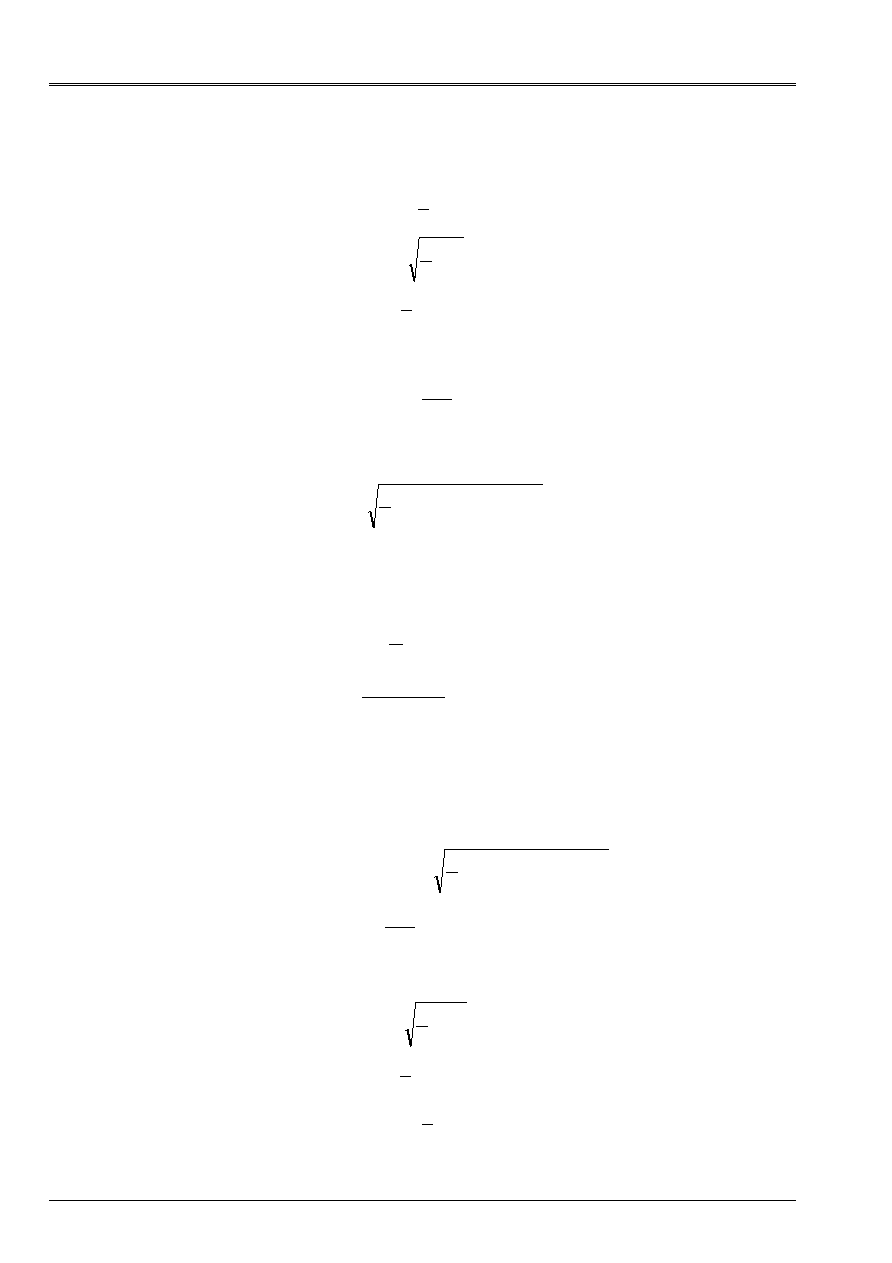
Code_Aster
®
Version
8.2
Titrate:
Operator
CALC_ELEM
Date:
02/03/06
Author (S):
A. ASSIRE,
J. Mr. PROIX
Key
:
U4.81.01-I1
Page
:
1/26
Instruction manual
U4.8- booklet: Postprocessing and dedicated analyzes
HT-62/06/004/A
Organization (S):
EDF-R & D/AMA
Instruction manual
U4.8- booklet: Postprocessing and dedicated analyzes
Document: U4.81.01
Operator
CALC_ELEM
1 Goal
To create or supplement one
result
by calculating fields by elements (forced,
deformations,…).
Each desired elementary field is characterized by the key word
OPTION
(
“SIGM_ELNO_DEPL”
,
“FLUX_ELGA_TEMP”
,
“VARI_ELNO_ELGA”
,…).
The concept produced result either is created, or modified, i.e. the call to
CALC_ELEM
is done
the following way:
resu
=
CALC_ELEM
(RESULT = resu…, reuse = resu,…)
or
resu1 = CALC_ELEM (RESULT = resu,…)

Code_Aster
®
Version
8.2
Titrate:
Operator
CALC_ELEM
Date:
02/03/06
Author (S):
A. ASSIRE,
J. Mr. PROIX
Key
:
U4.81.01-I1
Page
:
2/26
Instruction manual
U4.8- booklet: Postprocessing and dedicated analyzes
HT-62/06/004/A
2 Syntax
resu
[*] = CALC_ELEM
(
reuse = resu,
MODEL
=
Mo,
[model]
CHAM_MATER
=
chmater,
[cham_mater]
CARA_ELEM
=
carac,
[cara_elem]
# Selection of the meshs concerned with calculation
/
ALL
=
“YES”,
[DEFECT]
/
|
GROUP_MA
= l_grma
,
[l_gr_maille]
|
NET
= l_mail
,
[l_maille]
# Selection of the sequence number:
/
TOUT_ORDRE
=
“YES”,
/
NUME_ORDRE
=
l_nuor
,
[l_I]
/
LIST_ORDRE
=
l_nuor
,
[listis]
/
NUME_MODE
=
l_numo
,
[l_I]
/
NOEUD_CMP
=
l_nomo
,
[l_K16]
/
NOM_CAS
=
nocas
,
[K16]
/
/
INST
=
l_inst
,
[l_R]
/
FREQ
=
l_freq
,
[l_R]
/
LIST_INST
=
l_inst
,
[listr8]
/
LIST_FREQ
=
l_freq
,
[listr8]
| PRECISION =/prec,
/
1.0E-3,
[DEFECT]
|
CRITERION
=
/
“RELATIVE”,
[DEFECT]
/
“ABSOLUTE”
,
# options for linear mechanical results
RESULT
= resu,
/
[evol_elas]
/
[mode_meca]
/
[dyna_trans]
/
[mode_stat]
/
[base_modale]
/
[dyna_harmo]
/
[mode_flamb]
/
[mult_elas]
/
[fourier_elas]
/
TYPE_OPTION
=
“ALL”
[DEFECT]
OPTION
=
all
options
below,
# options of calculation of the stresses (elements of medium
continuous 2D and 3D) (cf [§3.5.1])
/
TYPE_OPTION =
“SIGM_MASSIF”,
OPTION
=
|
“SIEF_ELNO_ELGA”
|
“SIGM_ELNO_DEPL”
|
“SIEF_ELGA_DEPL”
#
options of calculation of the stresses (elements of structure:
beams, pipes, hulls)
(cf [§3.5.1])
/
TYPE_OPTION =
“SIGM_STRUCT”,
OPTION =
|
“SIEF_ELNO_ELGA”
|
“SIGM_ELNO_DEPL”
|
“SIEF_ELGA_DEPL”
|
“SIGM_ELNO_TUYO”
|
“SIPO_ELNO_DEPL”
|
“EFGE_ELNO_DEPL”
|
“EFGE_ELNO_CART”
|
“SIGM_ELNO_CART”
|
“SIGM_ELNO_SIEF”
|
“SIPO_ELNO_SIEF”

Code_Aster
®
Version
8.2
Titrate:
Operator
CALC_ELEM
Date:
02/03/06
Author (S):
A. ASSIRE,
J. Mr. PROIX
Key
:
U4.81.01-I1
Page
:
3/26
Instruction manual
U4.8- booklet: Postprocessing and dedicated analyzes
HT-62/06/004/A
# options of calculation of the deformations
(cf [§3.5.2])
/
TYPE_OPTION =
“EPSI”,
OPTION =
|
“EPSI_ELNO_DEPL”
|
“EPSI_ELGA_DEPL”
|
“EPME_ELNO_DEPL”
|
“EPME_ELGA_DEPL”
|
“DEGE_ELNO_DEPL”
|
“EPSI_ELNO_TUYO”
# options of calculation of energies (cf [§3.5.4])
/
TYPE_OPTION =
“ENER”,
OPTION =
|
“EPOT_ELEM_DEPL”
|
“ECIN_ELEM_DEPL”
|
“ENEL_ELGA”
|
“ENEL_ELNO_ELGA”
|
“ETOT_ELGA”
|
“ETOT_ELNO_ELGA”
|
“ETOT_ELEM”
# options of calculation of criteria (cf [§3.5.5])
/
TYPE_OPTION =
“CRIT”,
OPTION =
|
“EQUI_ELNO_SIGM”
|
“EQUI_ELGA_SIGM”
|
“EQUI_ELNO_EPSI”
|
“EQUI_ELGA_EPSI”
|
“EQUI_ELNO_EPME”
|
“EQUI_ELGA_EPME”
|
“ENDO_ELNO_SIGA”
|
“ENDO_ELNO_SINO”
|
“ENDO_ELGA”
|
“ENDO_ELNO_ELGA”
|
“SIEQ_ELNO_TUYO”
|
“EPEQ_ELNO_TUYO”
|
“CRIT_ELNO_RUPT”
# options of calculation of indicators of error
(cf [§3.5.6])
/
TYPE_OPTION =
“INDI_ERRE”,
OPTION =
|
“SIGM_NOZ1_ELGA”
|
“ERRE_ELEM_NOZ1”
|
“SIGM_NOZ2_ELGA”
|
“ERRE_ELEM_NOZ2”
|
“SIRE_ELNO_DEPL”
|
“ERRE_ELGA_NORE”
|
“ERRE_ELNO_ELGA”
# different options (cf [§3.5.7])
/
TYPE_OPTION =
“OTHERS”,
OPTION =
|
“VALE_NCOU_MAXI”
|
“PRES_DBEL_DEPL”
|
“VNOR_ELEM_DEPL”
# options of calculation of derived (related to
sensitivity) (cf [§3.2])
/
TYPE_OPTION =
“DERIVED”,
OPTION =
|
“DEUL_ELGA_DEPL”
|
“DEDE_ELNO_DLDE”
|
“DESI_ELNO_DLSI”

Code_Aster
®
Version
8.2
Titrate:
Operator
CALC_ELEM
Date:
02/03/06
Author (S):
A. ASSIRE,
J. Mr. PROIX
Key
:
U4.81.01-I1
Page
:
4/26
Instruction manual
U4.8- booklet: Postprocessing and dedicated analyzes
HT-62/06/004/A
# options for the nonlinear results (produced
by STAT_NON_LINE or DYNA_NON_LINE or DYNA_TRAN_EXPLI):
RESULT
= resu,
/
[evol_noli]
/
TYPE_OPTION
=
“ALL”
[DEFECT]
OPTION = all options below,
# options of calculation of the stresses (elements of
continuous mediums 2D and 3D) (cf [§3.5.1])
/
TYPE_OPTION =
`SIGM_MASSIF,
OPTION =
|
“SIEF_ELNO_ELGA”
# options of calculation of the stresses (elements of
structure: beams, pipes, hulls)
(cf [§3.5.1])
/
TYPE_OPTION =
“SIGM_STRUCT”,
OPTION =
|
“SIEF_ELNO_ELGA”
|
“EFGE_ELNO_CART”
|
“SIGM_ELNO_TUYO”
|
“SIGM_ELNO_COQU”
|
“SIGM_ELNO_SIEF”
|
“SIPO_ELNO_SIEF”
# options of calculation of the deformations
(cf [§3.5.2])
/
TYPE_OPTION =
“EPSI”,
OPTION =
|
“EPSI_ELNO_DEPL”
|
“EPSI_ELGA_DEPL”
|
“EPSG_ELNO_DEPL”
|
“EPSG_ELGA_DEPL”
|
“EPME_ELNO_DEPL”
|
“EPME_ELGA_DEPL”
|
“EPMG_ELNO_DEPL”
|
“EPMG_ELGA_DEPL”
|
“EPSP_ELNO”
|
“EPSP_ELGA”
|
“EPGR_ELNO”
|
“EPGR_ELGA”
|
“EPSI_ELNO_TUYO”
|
“DEGE_ELNO_DEPL”
# options of interpolation and extraction of
internal variables
/
TYPE_OPTION =
“VARI”,
OPTION =
|
“VARI_ELNO_ELGA”
|
“VARI_ELNO_TUYO”
|
“VARI_ELNO_COQU”
|
“EXTR_ELGA_VARI”
|
“EXTR_ELNO_VARI”
# options of calculation of energies (cf [§3.5.4])
/
TYPE_OPTION =
“ENER”,
OPTION =
|
“ETOT_ELGA”
|
“ETOT_ELNO_ELGA”
|
“ETOT_ELEM”
|
“ENEL_ELGA”
|
“ENEL_ELNO_ELGA”
# options of calculation of criteria (cf [§3.5.5])
/
TYPE_OPTION =
`CRIT,
OPTION =
|
“EQUI_ELNO_SIGM”
|
“EQUI_ELGA_SIGM”
|
“EQUI_ELNO_EPSI”
|
“EQUI_ELGA_EPSI”
|
“EQUI_ELNO_EPME”
|
“EQUI_ELGA_EPME”

Code_Aster
®
Version
8.2
Titrate:
Operator
CALC_ELEM
Date:
02/03/06
Author (S):
A. ASSIRE,
J. Mr. PROIX
Key
:
U4.81.01-I1
Page
:
5/26
Instruction manual
U4.8- booklet: Postprocessing and dedicated analyzes
HT-62/06/004/A
|
“ENDO_ELNO_SIGA”
|
“ENDO_ELNO_SINO”
|
“ENDO_ELGA”
|
“ENDO_ELNO_ELGA”
|
“INDI_LOCA_ELGA”
|
“SIEQ_ELNO_TUYO”
|
“EPEQ_ELNO_TUYO”
|
“CRIT_ELNO_RUPT”
|
“PMPB_ELNO_SIEF”
|
“PMPB_ELGA_SIEF”
# options of calculation of indicators of error
(cf [§3.5.6])])
/
TYPE_OPTION =
“INDI_ERRE”,
OPTION =
|
“ERRE_ELGA_NORE”
|
“ERRE_ELNO_ELGA”
|
“DCHA_ELNO_SIGM”
|
“DCHA_ELGA_SIGM”
|
“RADI_ELNO_SIGM”
|
“RADI_ELGA_SIGM”
# different options (cf [§3.5.7])
/
TYPE_OPTION =
“OTHERS”,
OPTION =
|
“VALE_NCOU_MAXI”
# options of sensitivity
/
TYPE_OPTION =
“DERIVED”,
OPTION =
|
“DEDE_ELNO_DLDE”
|
“DESI_ELNO_DLSI”
|
“DEUL_ELGA_DEPL”
SENSITIVITY = l_parasensi,
/
theta,
[theta_geom]
/
will listpara,
[para_sensi]
)
NOM_CHAM
=
CH,
[cham_elem_ *]
NOM_CMP
=
cmp,
[TXM]
EXCIT
=_F
(
CHARGE = l_charge, [l_char_meca]
/COEF_MULT = cm, [R]
/
COEF_MULT_C=
cmc,
[C]
/
FONC_MULT
=
Fm,
[function]
[tablecloth]
[formula]
/
FONC_MULT_C=
FMC,
[fonction_C]
PHAS_DEG = Pd,
[R]
PUIS_PULS = N
, [I]
TYPE_CHARGE = “FIXES”,
)
NORMALIZES
=/
“VMIS”, [DEFECT]
/
“TOTAL”,
/
“VMIS_CINE”
,
/
“TOTAL_CINE”,
ANGLE
=/
delta,
[I]
/
0.,
[DEFECT]
PLAN
=
/
“MALL”, [DEFECT]
/
“MOY”,
/
“INF”,
/
“SUP”,
| NUME_COUCHE
=
/
nume,
[I]
/
1,
[DEFECT]
|
NIVE_COUCHE
=
/
“INF”,
/
“SUP”,

Code_Aster
®
Version
8.2
Titrate:
Operator
CALC_ELEM
Date:
02/03/06
Author (S):
A. ASSIRE,
J. Mr. PROIX
Key
:
U4.81.01-I1
Page
:
6/26
Instruction manual
U4.8- booklet: Postprocessing and dedicated analyzes
HT-62/06/004/A
/
“MOY”
[DEFECT]
/
#
options
thermics
OPTION
=
|
“FLUX_ELNO_TEMP”,
|
“FLUX_ELGA_TEMP”,
|
“DEUL_ELGA_TEMP”,
|
“DETE_ELNO_DLTE”,
|
“ERTH_ELEM_TEMP”,
|
“ERTH_ELNO_ELEM”,
|
“SOUR_ELGA_ELEC”,
|
“DURT_ELGA_META”,
|
“DURT_ELNO_META”,
|
“HYDR_ELNO_ELGA”,
RESULT
= resu,
/
[evol_ther]
SENSITIVITY = l_parasensi,
/
theta,
[theta_geom]
/
will listpara,
[para_sensi]
/
#
options
acoustics
OPTION
=
|
“PRES_ELNO_DBEL”,
|
“PRES_ELNO_REEL”,
|
“PRES_ELNO_IMAG”,
|
“PRES_DBEL_DEPL”,
|
“INTE_ELNO_ACTI”,
|
“INTE_ELNO_REAC”,
RESULT
=
resu,
/
[acou_harmo]
/
[mode_acou]
TITRATE = title
,
[l_Kn]
INFORMATION
=/
1,
[DEFECT]
/2,
);

Code_Aster
®
Version
8.2
Titrate:
Operator
CALC_ELEM
Date:
02/03/06
Author (S):
A. ASSIRE,
J. Mr. PROIX
Key
:
U4.81.01-I1
Page
:
7/26
Instruction manual
U4.8- booklet: Postprocessing and dedicated analyzes
HT-62/06/004/A
3 Operands
3.1 Operands
RESULT
/
MODEL
/
CHAM_MATER
/
CARA_ELEM
RESULT
: resu
Name of the structure of data result to enrich. This argument can be the same one as that
used for the concept enriched by the operator, or a different name, which will create a news
structure of data result (see for example test SSLS504 [V3.03.504].
MODEL: Mo
Name of the model on which the efforts are calculated, the stresses, deformations,…. It is
optional bus can be extracted from the result.
CHAM_MATER: chmater
Material field associated with the model
Mo
. Also optional.
CARA_ELEM: carac
Elementary characteristics associated the model
Mo
, if it contains elements of structure or
if the isoparametric elements are affected by a local reference mark of anisotropy.
3.2 Operand
SENSITIVITY
SENSITIVITY
:
/
theta
[theta_geom]
/
will listpara
[para_sensi]
This key word is followed of a sensitive parameter list. It specifies that one is not interested
with the result in itself, but with derived from the result compared to a parameter. Thus one
sequence of the type:
RESULTAT=resu,
SENSIBILITE= (PS),
OPTION=' SIEF_ELGA_DEPL',
Mean that one wants to calculate at the points of Gauss the derivative of the stresses compared to
parameter PS. See [U4 .50.02] for the details on the parameters associated with the key words.
|
“DEUL_ELGA_DEPL”
|
“DEDE_ELNO_DLDE”
Derived Eulérienne from the field of displacements at the points of Gauss or the nodes
[R4.03.01].
Require the knowledge of the Lagrangienne derivative of displacements, therefore to have
activated the option SENSITIVITY in MECA_STATIQUE, and to use the key word SENSITIVITY
in CALC_ELEM.
|
“DESI_ELNO_DLSI”
Derived Eulérienne from the stress field to the nodes [R4.03.01].
Require the knowledge of the Lagrangienne derivative of the stresses in linear elasticity,
thus to have activated the option SENSITIVITY in MECA_STATIQUE, and to use the key word
SENSITIVITY in CALC_ELEM.

Code_Aster
®
Version
8.2
Titrate:
Operator
CALC_ELEM
Date:
02/03/06
Author (S):
A. ASSIRE,
J. Mr. PROIX
Key
:
U4.81.01-I1
Page
:
8/26
Instruction manual
U4.8- booklet: Postprocessing and dedicated analyzes
HT-62/06/004/A
3.3
Selection of the meshs concerned with calculation
Key words
ALL
,
GROUP_MA
and
NET
allow the user to choose the meshs on which
it wishes to make its elementary calculations of postprocessing.
/ALL: “YES”
All the meshs (carrying finite elements) will be treated. It is the default value.
/
|
GROUP_MA
: l_grma
|
NET
: l_maille
Only meshs included in
l_grma
and/or
l_maille
will be treated.
3.4
Selection of the sequence numbers
Cf [U4.71.00].
3.5
Operands for the mechanical options
3.5.1 Option of calculation of the stresses
|
“SIEF_ELGA_DEPL”
Calculation of the state of stress per element at the points of integration of the element (points of
GAUSS or points of integrations for each layer of the elements of hull and each
sector of the elements pipes) starting from displacements (linear elasticity), to see [U2.01.05].
|
“SIEF_ELNO_ELGA”
Calculation of the state of stress to the nodes (by element) starting from the state of stress with
points of Gauss.
|
“SIGM_ELNO_DEPL”
Calculation of the stresses by element to the nodes starting from displacements (linear elasticity),
to see [U1.04.00].
|
“SIGM_ELNO_COQU”
|
“NUME_COUCHE”
=
nume,
1,
[DEFECT]
|
“NIV_COUCHE” =/“INF”,
/
“SUP”,
/
“MOY”,
[DEFECT]
Calculation of the stresses in a layer of elements of hull (key words
NUME_COUCHE
and
NIVE_COUCHE
) starting from the stresses at the points of integration of each layer
(SIEF_ELGA) calculated during a nonlinear calculation. These stresses are calculated in
identify local hull defined by the user in the control
AFFE_CARA_ELEM
. In
case of the hulls in great displacements and great rotations (COQUE_3D with
DEFORMATION=' GREEN_GR'), this option also integrates the calculation of the stresses of
Cauchy starting from the stresses of Piola-Kirchhoff. Stresses resulting from this option
are thus stresses of Cauchy in a layer.

Code_Aster
®
Version
8.2
Titrate:
Operator
CALC_ELEM
Date:
02/03/06
Author (S):
A. ASSIRE,
J. Mr. PROIX
Key
:
U4.81.01-I1
Page
:
9/26
Instruction manual
U4.8- booklet: Postprocessing and dedicated analyzes
HT-62/06/004/A
|
“SIGM_ELNO_TUYO”
Calculation of the stresses in a layer and for an angular sector of elements pipe
(key words
NUME_COUCHE
,
NIVE_COUCHE
and
ANGLE
).
ANGLE
=/
delta,
[I]
/
0.,
[DEFECT]
| NUME_COUCHE
=
/
nume,
[I]
/
1,
[DEFECT]
|
NIVE_COUCHE
=
/
“INF”,
/
“SUP”,
/
“MOY”,
[DEFECT]
with:
· delta: angle in degrees (whole value) counted starting from the position of
generator of the element pipe,
· nume: number of layer (number 1 corresponds to the internal layer). Must
to be lower or equal to the total number of layers given in STAT_NON_LINE
(key word TUYAU_NCOU),
· NIVE_COUCHE indicates the position of the point of integration in layer (INF
corresponds to the internal point).
|
“SIGM_ELNO_CART”
“EFGE_ELNO_CART”
Change of reference mark of the stresses (or the generalized efforts) by element with the nodes
local reference mark with the total reference mark of description of the mesh; this option consists in converting
a stress field (or efforts generalized) for a model with elements of
structure, attached to the reference mark of reference of a whole of plates or hulls or
identify inertia the main thing of an element of beam, to express them in the total reference mark.
The generalized efforts can be obtained in a reference mark specified by the user with aid
key word EFGE_REPERE
|
“EFGE_ELNO_DEPL”
PLAN
:
/
“MALL”
[DEFECT]
/
“MOY”
/
`
INF'
/`
SUP'
Calculation of the efforts generalized by element with the nodes starting from displacements (elasticity
linear); this option has direction only for one model with elements of structure
(beam, hull).
In the case of modelings of plates with offsetting (DKT, DST, Q4G, GRID),
PLAN makes it possible to define the plan of calculation:
·
“MALL”: plan of the mesh,
·
“MOY”: average plan,
·
`
INF'
: higher plan (in the direction of the normal),
·
`
SUP'
: lower plan (in the direction of the normal).

Code_Aster
®
Version
8.2
Titrate:
Operator
CALC_ELEM
Date:
02/03/06
Author (S):
A. ASSIRE,
J. Mr. PROIX
Key
:
U4.81.01-I1
Page
:
10/26
Instruction manual
U4.8- booklet: Postprocessing and dedicated analyzes
HT-62/06/004/A
|
“SIPO_ELNO_DEPL”
“Forced” in the section of beam broken up into contributions of each effort
generalized:
MX
J
R
MX
Z
has
Vz
With
has
Vz
y
has
Vy
With
has
Vy
MZ
I
y
MZ
MY
I
Z
MY
With
NR
X
T
yz
Z
Z
xz
y
y
xy
Z
xx
y
xx
xx
torsion
of
moment
with
had
direction
in
NT
cisailleme
of
T
coeffician
edge
effort
with
had
direction
in
NT
cisailleme
of
T
coeffician
edge
effort
with
had
moment
with
had
bending
of
moment
with
had
normal
effort
with
had
=
=
=
=
=
=
SMT
SVZ
SVY
SMFZ
SMFY
SN
,
,
All this in local reference mark, main reference mark of inertia of the cross-section [R3.08.01].
Values of
xx
had at the two bending moments are the values maximum of those
calculated in Ymin, Ymax on the one hand, and in Zmin, Zmax on the other hand (for a section
general) (cf.
AFFE_CARA_ELEM
[U4.42.01]).
For a rectangular section:
·
one calculates the value of SMFY in Z = HZ/2,
·
one calculates the value of SMFZ in y = HY/2.
·
For a circular section, one calculates the values of SMFY and SMFZ for y and Z
being worth R.
|
“SIGM_ELNO_SIEF”
|
“SIPO_ELNO_SIEF”
Calculation of the stresses linearized by element with the nodes starting from the generalized efforts
(contents in field SIEF_ELNO_ELGA).
The expressions are the same ones as for options SIGM_ELNO_DEPL or
SIPO_ELNO_DEPL, usable only in linear elasticity. Here, options
SIGM_ELNO_SIEF and SIPO_ELNO_SIEF carry out same calculations as
SIGM_ELNO_DEPL or SIPO_ELNO_DEPL (for example
xx
y
Z
y
y
NR
S
MR. R
I
MR. R
I
=
+
+
.
.
) with
to leave the field SIEF_ELNO_ELGA, which can be calculated for behaviors not
linear. These local stresses are not the real stresses, but an estimate of
stresses due to the efforts generalized under the assumption of a linear distribution in
section of the beam.

Code_Aster
®
Version
8.2
Titrate:
Operator
CALC_ELEM
Date:
02/03/06
Author (S):
A. ASSIRE,
J. Mr. PROIX
Key
:
U4.81.01-I1
Page
:
11/26
Instruction manual
U4.8- booklet: Postprocessing and dedicated analyzes
HT-62/06/004/A
3.5.2 Options of calculation of the deformations
|
“DEGE_ELNO_DEPL”
Calculation of the deformations generalized by element with the nodes starting from displacements
(linear elasticity); this option has direction only for one model with elements of
structure.
|
“EPGR_ELNO”
“EPGR_ELGA”
Calculation (with the nodes or the points of Gauss) of the deformations of creep associated with
model of creep of GRANGER (for the concretes).
|
“EPME_ELNO_DEPL”
“EPME_ELGA_DEPL”
Calculation (with the nodes or the points of Gauss) of mechanical deformations `the ''' from
displacements. This calculation is made in theory of the `'small '' displacements. Deformations
calculated are equal to the total deflections minus the thermal deformations.
()
(
)
mij
I J
J I
HT
U
U
U
=
+
-
1
2
,
,
|
“EPMG_ELNO_DEPL”
“EPMG_ELGA_DEPL”
Calculation (with the nodes or the points of Gauss) of mechanical deformations `the ''' from
displacements. This calculation is made in theory of the `'great '' displacements. Deformations
calculated are equal to the total deflections minus the thermal deformations.
()
(
)
E
U
U
U
U U
mij
I J
J I
K I K J
HT
=
+
+
-
1
2
,
,
,
,
|
“EPSG_ELGA_DEPL”
Deformations of Green Lagrange at the points of Gauss.
()
(
)
E U
U
U
U U
ij
I J
J I
K I K J
=
+
+
1
2
,
,
,
,
|
“EPSG_ELNO_DEPL”
Deformations of Green Lagrange to the nodes.
|
“EPSI_ELNO_DEPL”
“EPSI_ELGA_DEPL”
Calculation of the deformations by element to the nodes (or the points of Gauss) from
displacements.
()
(
)
ij
I J
J I
U
U
U
=
+
1
2
,
,
|
“EPSI_ELNO_TUYO”
Calculation of the deformations in a layer and for an angular sector of elements pipe
(key words
NUME_COUCHE
,
NIVE_COUCHE
and
ANGLE
).
ANGLE
=/
delta,
[I]
/
0.,
[DEFECT]
| NUME_COUCHE
=
/
nume,
[I]
/
1,
[DEFECT]
|
NIVE_COUCHE
=
/
“INF”,
/
“SUP”,
/
“MOY”,
[DEFECT]

Code_Aster
®
Version
8.2
Titrate:
Operator
CALC_ELEM
Date:
02/03/06
Author (S):
A. ASSIRE,
J. Mr. PROIX
Key
:
U4.81.01-I1
Page
:
12/26
Instruction manual
U4.8- booklet: Postprocessing and dedicated analyzes
HT-62/06/004/A
with:
· delta: angle in degrees (whole value) counted starting from the position of
generator of the element pipe,
· nume: number of layer (number 1 corresponds to the internal layer). Must
to be lower or equal to the total number of layers given in STAT_NON_LINE
(key word TUYAU_NCOU),
· NIVE_COUCHE indicates the position of the point of integration in layer (INF
corresponds to the internal point).
|
“EPSP_ELGA”
Anelastic deformations at the points of Gauss. From the field of displacements
()
U
, of
stresses
()
, of temperatures
T
(the load thus should be provided containing
“TEMP_CALCULEE”), of possible anelastic deformations
has
, and of internal variables,
one calculates at every moment:
()
()
fl
has
HT
p
T
With
U
-
-
-
-
=
- 1
where
fl
is
clean deformation of creep of Granger.
|
“EPSP_ELNO”
Anelastic deformations obtained by extrapolation with the nodes of the values at the points of
Gauss (cf EPSP_ELGA).
3.5.3 Options of interpolation and extraction of the internal variables
|
“VARI_ELNO_ELGA”
Calculation of the variables intern with the nodes of the elements starting from the points of Gauss.
The number and the type of these internal variables are specific to each model of
behavior (cf Doc. U4 of STAT_NON_LINE for example).
|
“VARI_ELNO_TUYO”
Calculation of the variables intern in a layer and for an angular sector of elements
pipe (key words
NUME_COUCHE, NIVE_COUCHE
and
ANGLE
).
ANGLE
=/
delta,
[I]
/
0.,
[DEFECT]
| NUME_COUCHE
=
/
nume,
[I]
/
1,
[DEFECT]
|
NIVE_COUCHE
=
/
“INF”,
/
“SUP”,
/
“MOY”,
[DEFECT]
with:
· delta: angle in degrees counted starting from the position of the generator of the element
pipe,
· nume: number of layer (number 1 corresponds to the internal layer). Must
to be lower or equal to the total number of layers given in STAT_NON_LINE
(key word TUYAU_NCOU),
· NIVE_COUCHE indicates the position of the point of integration in layer (INF
corresponds to the internal point).
|
“VARI_ELNO_COQU”
Calculation of the variables intern in a layer of elements hull defined by NUME_COUCHE
and NIVE_COUCHE.

Code_Aster
®
Version
8.2
Titrate:
Operator
CALC_ELEM
Date:
02/03/06
Author (S):
A. ASSIRE,
J. Mr. PROIX
Key
:
U4.81.01-I1
Page
:
13/26
Instruction manual
U4.8- booklet: Postprocessing and dedicated analyzes
HT-62/06/004/A
Note:
For the options
RADI_ELNO_SIGM
and
RADI_ELGA_SIGM
, it should be known that calculation
require to compare the stress fields at the moment T
I
and T
i+1
. The result is arranged
with the sequence number associated at the moment T
I
.
The indicator of loss of radiality is calculated by:
(
)
IP
I
I
I
I
I
I
= -
-
-
+
+
1
1
1
:
.
.
By defect, calculation is done for the sequence numbers 1 with n1.
If one specifies the list of moment (with “holes” possibly), calculation will only concern
the required moments but it the moment T will always compare
I
with the moment T
i+1
in the list of
moments having been used to make non-linear calculation.
|
“EXTR_ELNO_VARI”,
“EXTR_ELGA_VARI”
Extraction of the variables only intern in THM (respectively with the nodes by
elements and at the points of Gauss).
To be able post to treat the variables intern in THM in a user-friendly way, of the fields
were created. The principle of these fields is to extract from field VARI_ELGA (or
VARI_ELNO_ELGA for the cham_elem with the nodes) the variable interns which interests us via
a key word more speaking that V1, V2,…
NOM_VARI
=/
nom_vari,
[TXM]
The name of the new fields is EXTR_ELGA_VARI and EXTR_ELNO_VARI for
cham_elem and EXTR_NOEU_VARI for the cham_no.
As a post processing these fields are calculated by CALC_ELEM and CALC_NO.
syntax to be used is as follows:
· for a cham_elem
GAMP=CALC_ELEM (RESULTAT=U1,
OPTION=' EXTR_ELNO_VARI',
NOM_VARI=' GAMP'); ----------->
new key word to indicate which
variable one wishes to extract via one
name
coded
· for a cham_no
GAMP=CALC_NO (reuse=GAMP,
RESULTAT=GAMP,
OPTION=' EXTR_NOEU_VARI');
Since it is just a question of extracting one (and only one!!) internal variable, cham_elem
agents must be calculated as a preliminary.
The list of the various reference symbols of the internal variables is:
“DPORO”
: variation of the porosity of material
“DRHOLQ”
: variation of the density of material
“DPVP”
: variation of the steam pressure
“SATLIQ”
: saturation of the fluid
“EVP”
: cumulated voluminal plastic deformation
“IND_ETA”
: Mechanical indicator of state
“D”
: Value of the damage
“IND_END”
: Indicator
of damage
“TEMP_MAX”
: Temperature
maximum
“GAMP”
: Plastic deformation déviatoire cumulated

Code_Aster
®
Version
8.2
Titrate:
Operator
CALC_ELEM
Date:
02/03/06
Author (S):
A. ASSIRE,
J. Mr. PROIX
Key
:
U4.81.01-I1
Page
:
14/26
Instruction manual
U4.8- booklet: Postprocessing and dedicated analyzes
HT-62/06/004/A
“PCR”
: Pressure
critical
“SEUIL_HYD”
: Threshold
hydrous
“IND_HYD”
: Hydrous indicator of irreversibility
“PCOHE”
: Pressure of cohesion
“COMP_ROC”
: Behavior of the rock
“SEUIL_ISO”
: Threshold
isotropic
“ANG_DEV”
: Angle of the threshold déviatoire
“X11”
: Components of the kinematic tensor of work hardening
“X22”
: Components of the kinematic tensor of work hardening
“X33”
: Components of the kinematic tensor of work hardening
“X12”
: Components of the kinematic tensor of work hardening
“X13”
: Components of the kinematic tensor of work hardening
“X23”
: Components of the kinematic tensor of work hardening
“DIST_DEV”
: Outdistance standardized with the threshold déviatoire
“DEV_SUR_CRIT”
: Relationship between the threshold déviatoire and the threshold deviatoric
critical
“DIST_ISO”
: Outdistance standardized with the isotropic threshold
“NB_ITER”
: Iteration count internal
“STOP”
: Value of the local test of stop of the iterative process
“NB_REDE”
: Numbers of local recutting of the pitch of time
“SIGN”
: Sign contracted product of the deviatoric stress by
deviatoric plastic deformation
Note:
When the variable to be extracted does not form part of the internal variables of the laws
concerned, an alarm is emitted but the field is affected all the same with
R8VIDE ().
3.5.4 Options of calculation of energies
|
“ECIN_ELEM_DEPL”
Kinetic energy of an element.
|
“ENEL_ELNO_ELGA”
“ENEL_ELGA”
Calculation of the density of energy elastic at the points of Gauss or the nodes of each
element.
This option differs from the option EPOT_ELEM_DEPL which calculates the deformation energy
rubber band integrated in each element, this energy being a scalar for an element
given. Here, one calculates the density of energy elastic which is written:
E
With
p
=
-
1
2
1
This calculation is pressed on the stress field at the points of Gauss, obtained by SIEF_ELGA
or SIEF_ELGA_DEPL.
|
“EPOT_ELEM_DEPL”
Calculation of the potential energy of deformation integrated on an element, from
displacements U and of the temperatures T
·
for the elements of continuous mediums 2D and 3D:
() ()
()
()
()
()
+
-
=
element
HT
HT
element
HT
element
FD
T
With
T
FD
T
With
FD
With
EPOT
.
2
1
.
.
2
1
U
U
U

Code_Aster
®
Version
8.2
Titrate:
Operator
CALC_ELEM
Date:
02/03/06
Author (S):
A. ASSIRE,
J. Mr. PROIX
Key
:
U4.81.01-I1
Page
:
15/26
Instruction manual
U4.8- booklet: Postprocessing and dedicated analyzes
HT-62/06/004/A
·
for the elements of beams:
HT
HT
HT
T
E
T
EPOT
With
With
B
U
U
K
U
T
2
1
2
1
+
-
=
·
and for the elements of plates and hulls:
HT
T
E
T
EPOT
With
B
U
U
K
U
T
-
= 21
|
“EPGR_ELGA”
|
“EPGR_ELNO”
Deformations of clean creep of the concrete (model of Granger [R7.01.01]).
|
“ETOT_ELGA”
|
“ETOT_ELNO_ELGA”
|
“ETOT_ELEM”
Calculation of the total deformation energy (see option ENER_TOTALE of POST_ELEM) with
points of Gauss, with the nodes or integrated on the element.
|
“PRES_DBEL_DEPL”
Calculation of the pressure to the nodes of the elements (in decibels) starting from the fields of
displacements for the elements of vibroacoustic.
3.5.5 Options of calculation of criteria
|
“CRIT_ELNO_RUPT”
Calculation of the criteria of rupture for the composite material hulls [R4.01.01]. To leave
stresses calculated for a given layer (option “SIGM_ELNO_DEPL”, and words
keys NUME_COUCHE and NIVE_COUCHE), and of the ultimate stresses provided under ELAS_ORTH
in DEFI_MATERIAU, field “CRIT_ELNO_RUPT” contains 6 components:
NT
cisailleme
in
rupture
of
criterion
if
feel
in
N
compressio
in
rupture
of
criterion
if
feel
in
traction
in
rupture
of
criterion
if
feel
in
N
compressio
in
rupture
of
criterion
if
feel
in
traction
in
rupture
of
criterion
LT
S
T
Y
T
Y
L
X
L
X
LT
T
C
T
T
T
T
L
C
L
L
T
L
_
,
0
,
,
0
,
,
0
,
,
0
,
=
<
=
>
=
<
=
>
=
CRILT
CRITP
CRIT
CRILP
CRIL
and
Hill
-
Tsai
of
criterion
=
CRITH
(see example in test SSLS121 [V3.03.121]
All these quantities are calculated in the reference mark of orthotropism of the stage coach considered.
|
“ENDO_ELNO_SIGA”
“ENDO_ELNO_SINO”
Calculation of the rate of triaxiality and the stress equivalent of damage (to the nodes
(_SINO) or at the points of Gauss (_SIGA) starting from the stresses.

Code_Aster
®
Version
8.2
Titrate:
Operator
CALC_ELEM
Date:
02/03/06
Author (S):
A. ASSIRE,
J. Mr. PROIX
Key
:
U4.81.01-I1
Page
:
16/26
Instruction manual
U4.8- booklet: Postprocessing and dedicated analyzes
HT-62/06/004/A
That is to say
S
the diverter of the tensor of the stresses
:
()
()
S
tr
I
S S
tr
eq
H
= -
=
=
1
3
3
2
1
3
.
:
The rate of triaxiality
is defined by:
=
H
eq
The equivalent stress of damage is:
(
)
(
)
*
=
+
+
-
eq
2
3 1
3 1 2
2
|
“ENDO_ELGA”
Calculation of the damage
D
at the points of Gauss starting from the tensor of the stresses and
cumulated plastic deformation
p
. The kinetics of damage is given by the law of
Lemaître-Sermage:
p
S
Y
D
S
&
&
=
if
threshold
p
p
with
2
2
)
1
(
2
*
D
E
Y
-
=
where
S
and
S
are coefficients characteristic of material and
threshold
p
the threshold
of damage related to the energy stored in material (if
1
=
S
one obtains the law of
Conventional Lemaître).
Systematic calculation of the rate of triaxiality
and of the equivalent stress
of damage
*
:
SI_ENDO
:
(
)
(
)
*
=
+
+
-
eq
2
3 1
3 1 2
2
)
TRIAX
:
=
H
eq
with
()
()
I
tr
tr
H
eq
.
3
1
'
3
1
'
:'
2
3
-
=
=
=

Code_Aster
®
Version
8.2
Titrate:
Operator
CALC_ELEM
Date:
02/03/06
Author (S):
A. ASSIRE,
J. Mr. PROIX
Key
:
U4.81.01-I1
Page
:
17/26
Instruction manual
U4.8- booklet: Postprocessing and dedicated analyzes
HT-62/06/004/A
Calculation of the total damage by linear office plurality
D_CUMULE
:
=
I
I
D
D
:
TRIAX
value of the rate of triaxiality
SI_ENDO
value of the stress of damage of Lemaître-Sermage
COENDO
value of the stress of damage of Lemaître-Sermage standardized
DOM_LEM
value of the damage of Lemaître-Sermage
D_CUMULE
value of the damage of cumulated Lemaître-Sermage
|
“ENDO_ELNO_ELGA”
Damage of Lemaitre-Sermage obtained by extrapolation with the nodes of the values
at the points of Gauss (cf ENDO_ELGA).
|
“EQUI_ELGA_EPSI”
|
“EQUI_ELGA_EPME”
Deformations “equivalent” to the points of Gauss (calculated starting from the fields
EPSI_ELGA_DEPL, or EPME_ELGA_DEPL):
INVA_2
: second invariant of
ij
ij
3
2
=
INVA_2
INVA_2SG
: second invariant of
signed by the trace of
PRIN_1
,
PRIN_2
,
PRIN_3
: main deformations
For the elements PIPE, the components calculated are INVA_2 and INVA_2SG
|
“EQUI_ELGA_SIGM”
Stresses “equivalent” to the points of Gauss:
VMIS
: stress of von Mises:
VMIS
=
=
-
3
2
3
$ $
$
ij ij
ij
ij
ij
tr
VMIS_SG
: stress of von Mises signed by the trace of
INVA_2
: second invariant of
INVA_2SG
: second invariant of
signed by the trace of
PRIN_1
,
PRIN_2
,
PRIN_3
: main stresses
TRESCA
: stress of Tresca
VECT_1_X, VECT_1_Y,…, VECT_3_Z: main stresses, deformations and directions,
only for modelings below:
3D, 3d_SI, 3d_GRAD_VARI
SHB8 only for the stresses
AXIS, AXIS_SI, AXIS_GRAD_VARI
D_PLAN, D_PLAN_SI, D_PLAN_GRAD_EPSI, D_PLAN_GRAD_VARI
C_PLAN, C_PLAN_SI, C_PLAN_GRAD_EPSI, C_PLAN_GRAD_VARI

Code_Aster
®
Version
8.2
Titrate:
Operator
CALC_ELEM
Date:
02/03/06
Author (S):
A. ASSIRE,
J. Mr. PROIX
Key
:
U4.81.01-I1
Page
:
18/26
Instruction manual
U4.8- booklet: Postprocessing and dedicated analyzes
HT-62/06/004/A
For the elements PIPE, the components calculated are VMIS and VMIS_SG and their version
signed * _SG.
|
“EQUI_ELNO_EPSI”
|
“EQUI_ELNO_EPME”
Deformations “equivalent” to the nodes (calculated starting from fields EPSI_ELNO_DEPL,
or EPME_ELNO_DEPL):
INVA_2
: second invariant of
INVA_2SG
: second invariant of
signed by the trace of
PRIN_1
,
PRIN_2
,
PRIN_3
: main deformations
|
“EQUI_ELNO_SIGM”
Stresses “equivalent” to the nodes:
VMIS
: stress of von Mises
VMIS_SG
: stress of von Mises signed by the trace of
PRIN_1
,
PRIN_2
,
PRIN_3
: main stresses
TRESCA
: stress of Tresca
For the elements of continuous mediums 2D and 3D, they are (starting from version 7.2)
extrapolated with the nodes starting from the stresses equivalent calculated to the points of
Gauss, they same calculated starting from the stress fields at the points of Gauss
(SIEF_ELGA_DEPL into linear, and SIEF_ELGA into nonlinear).
If one calculates then the values realized with the nodes, by the option
“EQUI_NOEU_SIGM” of CALC_NO, the interpolations, one does not have inevitably
VMIS = ABS (VMIS_SG).
For the elements of hulls, they are calculated directly on the local stresses (in
a point thickness) to nodes (SIGM_ELNO_DEPL into linear and SIGM_ELNO_COQU in
nonlinear).
|
INDI_LOCA_ELGA'
Indicator of localization, based on the acoustic tensor (criterion of RICE), defined by:
det (N.H. NR) <=0, where H appoints the tangent operator and NR the normal with the directions of localization.
This definite indicator a state from which the local problem integration of the behavior
its character of unicity loses.
The method is developed only in the case 2D and for the law of behavior of the type
DRUCKER_PRAGER.
The OPTION INDI_LOCA_ELGA which contains the following components:
·
INDEX
: Indicator of localization being worth 0 if det (N.H. NR) > 0, and being worth 1
if not, which corresponds has the initiation of the localization,
·
DIR1
:
corresponds to the first normal at the area of localization,
·
DIR2
:
with the second normal
·
DIR3
:
with the third normal
·
DIR4
:
with the fourth normal
|
EPEQ_ELNO_TUYO'
|
SIEQ_ELNO_TUYO'
Calculation of the generalized strains and the stresses for elements pipe. It is
equivalent values of type EQUI_ELGA_SIGM and EQUI_ELGA_EPSI in a point of
section. It is an extraction carried out according to the same principle as the already existing option
SIGM_ELNO_TUYO. The calculation of the deformations is carried out in a layer and a sector
angular of elements Pipe.

Code_Aster
®
Version
8.2
Titrate:
Operator
CALC_ELEM
Date:
02/03/06
Author (S):
A. ASSIRE,
J. Mr. PROIX
Key
:
U4.81.01-I1
Page
:
19/26
Instruction manual
U4.8- booklet: Postprocessing and dedicated analyzes
HT-62/06/004/A
|
“PMPB_ELGA_SIEF”
|
“PMPB_ELNO_SIEF”
Calculation of criteria of the RCC-M G3000 for the elements of beams POU_D_E and POU_D_T.
Two quantities are calculated: PM and PMPB.
2
2
.
PMPB
PM
Z
y
M
M
M
I
R
M
S
NR
S
NR
+
=
+
=
=
with
This corresponds to the maximum value of SIXX in a circular section [R3.08.01].
PMPB_ELGA_SIEF: values of PM and PMPB at the points of Gauss, calculated from
SIEF_ELGA.
PMPB_ELNO_SIEF: values of PM and PMPB to the nodes, calculated from
SIEF_ELNO_ELGA.
In any rigor, these criteria are to be applied to the primary stresses. This distinction is
to make by the user.
3.5.6 Options of calculation of indicators of error
|
“DCHA_ELGA_SIGM”
Local indicator of discharge at the points of Gauss [R4.20.01].
|
“DCHA_ELNO_SIGM”
Local indicator of discharge to the nodes [R4.20.01].
Note:
For the options
DCHA_ELGA_SIGM
and
DCHA_ELNO_SIGM
, it should be known that calculation
require to compare the stress fields at the moment T
I
and T
i+1
. The result is arranged
with the sequence number associated at the moment T
I
.
The indicator of discharge is calculated by:
ID
I
I
I
=
-
+
+
1
1
.
By defect, calculation is done for the sequence numbers 1 with n1.
If one specifies the list of moment (with “holes” possibly), calculation will only concern
the required moments but it the moment T will always compare
I
with the moment T
i+1
in the list of
moments having been used to make non-linear calculation.
|
“ERRE_ELEM_NOZ1”
(respectively
“ERRE_ELEM_NOZ2”
)
Calculation of the estimator of error of ZHU_ZIENKIEWICZ (linear elasticity 2D) from
the option
“SIGM_NOZ1_ELGA”
(respectively
“SIGM_NOZ2_ELGA”
). If this last field
do not exist in
resu
, it is automatically built as a preliminary, to see [R4.10.01].
|
“ERRE_ELGA_NORE”
Estimator of error in residue in mechanics, calculated by element [R4.10.02].
The Councils of use of option ERRE_ELGA_NORE
For carrying out well the estimate of error of mechanical calculation (within the theoretical limits of the formula
developed within the elliptic framework with regular border….), it should be carried out on all the model:
ALL = “YES” (default value)
It should be noted that the model is not inevitably defined on all the geometry.

Code_Aster
®
Version
8.2
Titrate:
Operator
CALC_ELEM
Date:
02/03/06
Author (S):
A. ASSIRE,
J. Mr. PROIX
Key
:
U4.81.01-I1
Page
:
20/26
Instruction manual
U4.8- booklet: Postprocessing and dedicated analyzes
HT-62/06/004/A
It is also necessary to carry out beforehand in CALC_ELEM the calculation of the stresses to the nodes
(cf [R3.06.03]), by SIGM_ELNO_DEPL or SIRE_ELNO_DEPL into linear, by
SIEF_ELNO_ELGA
in
nonlinear. If not an alarm is emitted and the error analysis is not carried out without causing the stop
execution. If the stress field to the nodes already exists in the structure of data
result
it is not recomputed
.
·
With regard to the loadings:
It is necessary to provide to CALC_ELEM the loadings used for mechanical calculation:
EXCIT=_F (CHARGE=….)
by taking well guard with the rules of different overloads for the mechanical solvor and
for this option of CALC_ELEM.
Thus, mechanical calculation (MECA_STATIQUE, STAT_NON_LINE…) incorporate the conditions with
limits whereas the error analysis will not retain, for a type of boundary conditions
given, that the last listed in the EXCIT of CALC_ELEM.
The command thus has a crucial importance! One thus should not, for a type of conditions with
limits, that only one occurrence in the AFFE_CHAR…
One holds account only loading of the type: GRAVITY, ROTATION,
FORCE_INTERN, PRES_REP, FORCE_FACE, FORCE_ARETE.
Only the three last can be variable.
It is advised to use finite elements of command 2 in the case of voluminal forces, if not
this term is very badly calculated since DIV (SIGMA) is quasi null!
To take into account the error relating to a CL null it should be forced as a function
via a AFFE_CHAR_MECA_F. Via a constant, it will not be taken into account.
·
Mesh:
The mesh must be triangular or tetrahedral, with any GROUP_NO if one wants to re-mesh
then via LOBSTER.
·
In 2D, it takes into account only the errors on (and between) the isoparametric elements
SEG2/3, TRIA3/6, QUAD4/8/9.
In 3D, idem with FACE3/4/6/8/9, TETRA4/10, PENTA6/13/15 and HEXA8/20/27… thus not
PYRAM nor elements of structure (hull, plate, beam…).
·
In addition, it is necessary to take care not to intercalate segments between two quadrangles or two
triangles (resp. quad or triangle between two hexa), if not one cannot calculate the term of
jump relating to this vicinity. In the place, one enquérit (wrongly) of possible a CL.
|
“ERRE_ELNO_ELGA”
Estimator of error in residue to the nodes [R4.10.02].
|
“RADI_ELGA_SIGM”
Indicator of loss of radiality at the points of Gauss [R4.20.01].
|
“RADI_ELNO_SIGM”
Indicator of loss of radiality to the nodes [R4.20.01].
|
“SIGM_NOZ1_ELGA”
Calculation of the stresses to the nodes (linear elasticity 2D); the stresses are obtained by
a total smoothing (within the meaning of least squares) of the stresses at the points of GAUSS. See
Estimate of error by smoothing of the stresses [R4.10.01].
|
“SIGM_NOZ2_ELGA”
Calculation of the stresses to the nodes (linear elasticity 2D); the stresses are obtained by
a local smoothing with a patch of elements (within the meaning of least squares) of the stresses with
points of GAUSS, to see [R4.10.01].

Code_Aster
®
Version
8.2
Titrate:
Operator
CALC_ELEM
Date:
02/03/06
Author (S):
A. ASSIRE,
J. Mr. PROIX
Key
:
U4.81.01-I1
Page
:
21/26
Instruction manual
U4.8- booklet: Postprocessing and dedicated analyzes
HT-62/06/004/A
3.5.7 Others
options
|
“VNOR_ELEM_DEPL”
Projection of a field speed on the normal of the elements of the hull type or plate.
This option is used in particular for the chaining with the code VARIED.
|
“VALE_NCOU_MAXI”
NOM_CHAM = CH [cham_elem_ *]
NOM_CMP
=
cmp [TXM]
Extraction of the extreme values, in each point of linear Gauss of a pipe section,
component cmp of the CH field, on all the points of integration of the section.
The possible fields are: stress fields (SIEF_ELGA_, SIEF_ELGA_DEPL),
fields of deformations (EPSI_ELGA_DEPL), fields of equivalent values
(EQUI_ELGA_SIGM, EQUI_ELGA_EPSI), internal fields of variables (VARI_ELGA).
The field creates name VALE_NCOU_MAXI contains for each moment the components:
MIN
value minimum
MAX
maximum value
NCOUMIN
number of the layer for the value min
NCOUMAX
number of the layer for the value max
NSEGMIN
number of the angular sector for the value min
NSEGMAX
number of the angular sector for the value max
NPCOUMIN
number of the point of layer NCOUMIN
NPCOUMAX
number of the point of layer NCOUMAX
NPSECMIN
number of the point on sector NSECMIN
NPSECMAX
number of the point on sector NSECMAX
3.5.8 Word
key
EXCIT
3.5.8.1 Operand
CHARGE
This key word factor makes it possible to define the thermal or mechanical loadings and of
coefficients which were useful in the structural analysis of data
RESULT
that one enriches.
Operand
CHARGE
CHARGE = load
Necessary to recover the values of temperature (for an analysis
thermomechanical) and loadings distributed for the models containing of the beams.
Field of temperature for a thermomechanical analysis
The field of temperature thus recovered intervenes in 2 ways:
·
possible amendment of the characteristics of materials,
·
taking into account of thermal dilation for the calculation of the deformations and of
stresses.
Important remark:
It is a rather conventional error of use to forget to inform the key word
CHARGE
in a thermomechanical analysis. In this case the calculated stresses are
false. It is wise to take the practice always to indicate the loads taken in
count during the calculation of displacement (even if they are not used for nothing!).

Code_Aster
®
Version
8.2
Titrate:
Operator
CALC_ELEM
Date:
02/03/06
Author (S):
A. ASSIRE,
J. Mr. PROIX
Key
:
U4.81.01-I1
Page
:
22/26
Instruction manual
U4.8- booklet: Postprocessing and dedicated analyzes
HT-62/06/004/A
Loadings distributed for the models containing of the beams
For the models containing of the beams, one stipulates under the key word
CHARGE
, loadings
distributed. However the loadings could be multiplied in other controls by coefficients
that one informs then under the key words.
COEF_MULT = cm
Real multiplying coefficient used in the controls
DYNA_LINE_HARM
[U4.53.11], and
DYNA_LINE_TRAN
[U4.53.02].
COEF_MULT_C = cmc
Multiplying coefficient complexes used in the control
DYNA_LINE_HARM
[U4.53.11].
FONC_MULT = Fm
Real multiplying function used in the control
DYNA_LINE_HARM
[U4.53.11] (it
depends on the frequency) and the controls
MECA_STATIQUE
[U4.51.01] and
DYNA_LINE_TRAN
[U4.53.02] (it depends on time).
FONC_MULT_C = FMC
Multiplying function complexes used in the control
DYNA_LINE_HARM
[U4.53.11]
(it depends on the frequency).
PHAS_DEG = Pd
This operand makes it possible to define the phase of each component of the excitation in degrees by
report/ratio with a reference of single phase. It is used in the control
DYNA_LINE_HARM
[U4.54.02].
PUIS_PULS = N
This number makes it possible to define the power of pulsation when the loading is related to
the frequency. It is used in the control
DYNA_LINE_HARM
[U4.53.11].
3.5.9 Operand
NORMALIZES
For the options
“DCHA_…”
or
“RADI_…”
, one must choose a “standard” for the tensor of the stresses
[R4.20.01] the choice is made thanks to the key word
NORMALIZES
.
/“VMIS”
[DEFECT]
One takes the second invariant of the diverter of the tensor of the stresses
.
/“VMIS_CINE”
Before taking the second invariant of the diverter, one withdraws with the tensor of the stresses
tensor X characterizing the kinematic state of work hardening.
/“TOTAL”
The second invariant of the tensor is taken
(by taking account of the trace).
/“TOTAL_CINE”
One withdraws initially X before taking the second invariant of the total tensor of the stresses (holding
count trace).
Note:
Standards
“VMIS_CINE”
and
“TOTAL_CINE”
are usable only if calculation
elastoplastic was made with the behavior
“VMIS_CINE_LINE”
.

Code_Aster
®
Version
8.2
Titrate:
Operator
CALC_ELEM
Date:
02/03/06
Author (S):
A. ASSIRE,
J. Mr. PROIX
Key
:
U4.81.01-I1
Page
:
23/26
Instruction manual
U4.8- booklet: Postprocessing and dedicated analyzes
HT-62/06/004/A
3.5.10 Operands NUME_COUCHE/NIVE_COUCHE
NUME_COUCHE = nume
In the case of a multi-layer material (multi-layer hull defined by DEFI_COQU_MULT), or
of an element of structure with local nonlinear behavior, integrated by layers,
NUME_COUCHE is, whole value ranging between 1 and numbers it layers, necessary for
to specify the layer where one wishes to carry out elementary calculation. By convention, layer 1 is
the sub-base (in the direction of the normal) in the case of elements of mechanical hull
or of thermal hull and corresponds to the layer interns an element PIPE in the case of.
NIVE_COUCHE
=
For the layer
nume
defined by
NUME_COUCHE
, allows to specify the ordinate where one wishes
to carry out elementary calculation:
“INF”
lower ordinate of the layer
(skin interns),
“SUP”
higher ordinate of the layer
(external skin),
“MOY”
average ordinate of the layer
(average layer).
3.5.11 Operand PLAN
PLAN
=
/
“MALL”
[DEFECT]
/
“MOY”
/
`
INF'
/`
SUP'
This operand makes it possible to specify the plan of calculation of the elementary fields for a model with
elements of plates by taking account of possible offsetting.
Limitations: this option is available only for the calculation of the efforts generalized by elements to
nodes starting from displacements (linear elasticity), option EFGE_ELNO_DEPL.
Moreover, this option is usable only for DKT, DST, Q4G, GRID.
·
“MALL”: plan of the mesh,
·
“MOY”: average plan,
·
'
INF
': higher plan (in the direction of the normal),
·
'
SUP
': lower plan (in the direction of the normal).
3.6
Operands for the thermal options
3.6.1 Operand
OPTION
|
“FLUX_ELGA_TEMP”
Calculation of the heat transfer rates at the points of integration of GAUSS starting from the temperature.
|
“FLUX_ELNO_TEMP”
Calculation of the heat transfer rates to the nodes starting from the temperature.
| “ERTH_ELEM_TEMP”,
| “ERTH_ELNO_ELEM”
Estimators of error in residue in thermics. [R4.10.03]. It is necessary beforehand to carry out in
CALC_ELEM the calculation of flows to the nodes via FLUX_ELNO_TEMP.
The key word INFORMATION gets all the intermediate displays of calculations (connectivities, normals,
diameters, values of the fields, jacobien).
Option “ERTH_ELNO_ELEM” makes it possible to bring back the field by element ERTH_ELEM_TEMP has one
field with the nodes by element, which makes it possible to make recordings of values or impressions
/visualizations.
|
“SOUR_ELGA_ELEC”
Calculation of a heat source (which can be introduced into a thermal calculation via the key word
SOURCE = (SOUR_CALCULEE: …)
control
AFFE_CHAR_THER
[U4.44.02].
This source is calculated starting from an electric potential via the law of Ohm. This electric potential
must be calculated by the operator
THER_LINEAIRE
[U4.54.01] by making the analogies
necessary.

Code_Aster
®
Version
8.2
Titrate:
Operator
CALC_ELEM
Date:
02/03/06
Author (S):
A. ASSIRE,
J. Mr. PROIX
Key
:
U4.81.01-I1
Page
:
24/26
Instruction manual
U4.8- booklet: Postprocessing and dedicated analyzes
HT-62/06/004/A
|
“DEUL_ELGA_TEMP”
|
“DETE_ELNO_DLTE”
Derived Eulérienne from the field of temperature at the points of Gauss or the nodes
[R4.03.01].
Require the knowledge of the Lagrangienne derivative of the temperatures, therefore to have activated
the option SENSITIVITY in THER_LINEAIRE, and to use the key word SENSITIVITY in
CALC_ELEM.
|
“DURT_ELGA_META”
“DURT_ELNO_META”
Calculation of hardness (at the points of Gauss or the nodes) starting from the metallurgical phases
(cf [R4.04.01]).
|
“HYDR_ELNO_ELGA”
Calculation of the hydration to the nodes starting from the hydration at the points of Gauss, calculated by
THER_NON_LINE for the modeling of the concrete [R7.01.12].
3.7
Operands for the acoustic options
3.7.1 Operand
OPTION
|
“PRES_ELNO_DBEL”
Calculation of the pressure to the nodes in decibels.
|
“PRES_ELNO_REEL”
Calculation of the real parts of the field of pressure to the nodes.
|
“PRES_ELNO_IMAG”
Calculation of the real imaginary parts of the field of pressure to the nodes.
|
“INTE_ELNO_ACTI”
Calculation of the acoustic intensity activates with the nodes.
|
“INTE_ELNO_REAC”
Calculation of the acoustic intensity reactivates with the nodes.
The definitions are in [R4.02.01].
3.8 Operand
TITRATE
TITRATE = title
Titrate that one wants to give to the result of the control [U4.02.01].

Code_Aster
®
Version
8.2
Titrate:
Operator
CALC_ELEM
Date:
02/03/06
Author (S):
A. ASSIRE,
J. Mr. PROIX
Key
:
U4.81.01-I1
Page
:
25/26
Instruction manual
U4.8- booklet: Postprocessing and dedicated analyzes
HT-62/06/004/A
4 Examples
4.1
Calculation of flow for one
evol_ther
evoth = CALC_ELEM (reuse=evoth, RESULT = evoth, MODEL = Mo,
CHAM_MATER = chmat,
TOUT_ORDRE
=
“YES”,
OPTION
=
“FLUX_ELNO_TEMP”
)
4.2 Calculation of the estimator of error
ZZ2
for a few moments of one
concept of the type
evol_elas
evolas = CALC_ELEM (reuse= evolas,
RESULT = evolas,
MODEL = Mo,
CHAM_MATER= chmat, INST = (1., 10., 20.), OPTION = “ERRE_ELEM_NOZ2”)
4.3
Stresses at the points of GAUSS for a thermomechanical calculation
evolas = CALC_ELEM (reuse= evolas,
RESULT = evolas, MODEL = Mo,
CHAM_MATER = chmat, LOAD = ch_ther, TOUT_ORDRE = “YES”,
OPTION
= ' SIEF_ELGA_DEPL'
)
4.4
Calculation of the potential energies for a clean mode
mode = CALC_ELEM (reuse=mode, RESULT = mode, MODELS = Mo,
CHAM_MATER = chmat
,
NUME_MODE = 3, OPTION = ' EPOT_ELEM_DEPL')
4.5
Calculation of derived from the stresses
evolas = CALC_ELEM (reuse= evolas,
RESULT = evolas, MODEL = Mo,
CHAM_MATER = chmat, SENSIBILITE= (ps1, ps2),
OPTION
= ' SIEF_ELGA_DEPL'
)
4.6
Calculation of the damage of Lemaître or Lemaître-Sermage
evolas = CALC_ELEM (reuse = evolas, MODELE=mo, CHAM_MATER= chmat,
OPTION= (“ENDO_ELGA”, “ENDO_ELNO_ELGA”,),
RESULTAT= evolas,);

Code_Aster
®
Version
8.2
Titrate:
Operator
CALC_ELEM
Date:
02/03/06
Author (S):
A. ASSIRE,
J. Mr. PROIX
Key
:
U4.81.01-I1
Page
:
26/26
Instruction manual
U4.8- booklet: Postprocessing and dedicated analyzes
HT-62/06/004/A
Intentionally white left page.


























